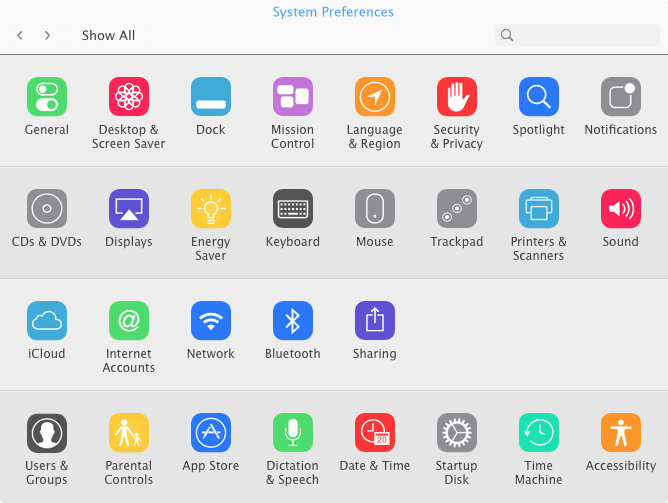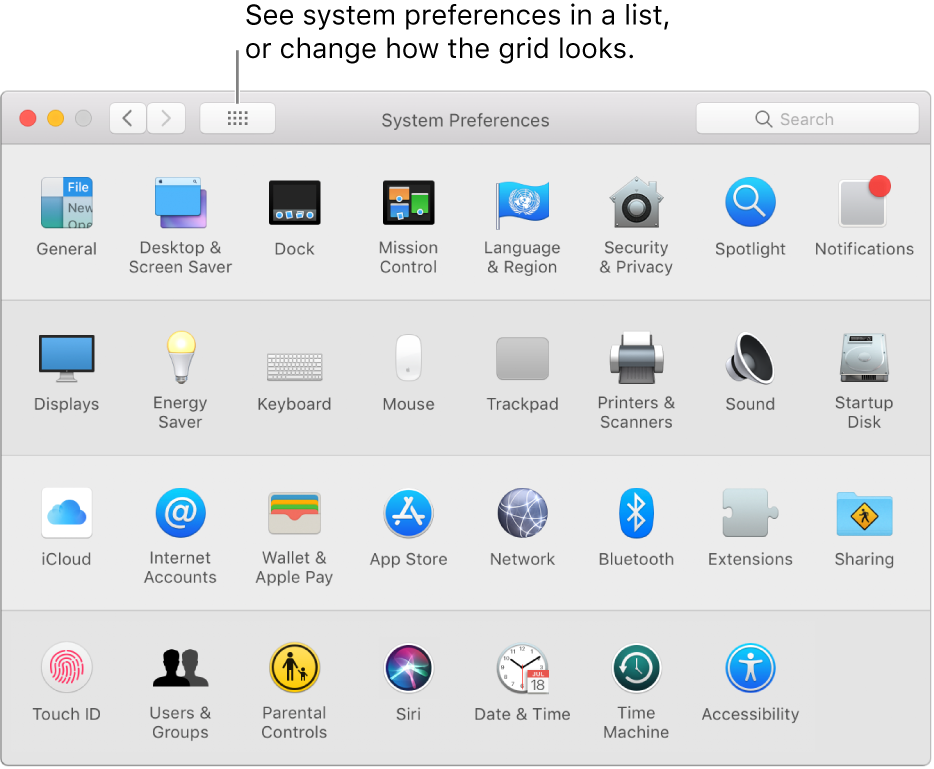

- #HOW TO CHANGE MAC SYSTEM PREFERENCES ICONS MAC OS#
- #HOW TO CHANGE MAC SYSTEM PREFERENCES ICONS INSTALL#
#HOW TO CHANGE MAC SYSTEM PREFERENCES ICONS INSTALL#
Standard: Standard user accounts can install apps and change settings that affect only their own accounts.
#HOW TO CHANGE MAC SYSTEM PREFERENCES ICONS MAC OS#
While the administrator is one type of account, the Mac OS supports additional types, including: (Some system preferences are restricted to those with administrator accounts, which can prevent Standard users from fixing common problems.)

If there’s a system preference pane for a service, users holding an administrator account can make changes as they see fit. It does, however, have power over all of the Mac’s system preferences, including the ability to add new apps, add new users, assign user groups, manage parental controls, set up accessibility options, and manage printers. The Mac’s administrator account isn’t an all-powerful tyrant it has a number of restrictions, including the inability to access another user’s data. The first account created during the original setup of your Mac is an administrator account that includes elevated privilege levels that allow the account holder to manage the basic system. But if you’re inclined to use the standard, managed, and administrator user models to ensure a bit tighter security, then this tip can help you keep your personal workload low, while allowing other users to perform routine tasks, such as resetting printers, without needing the local overlord to make an appearance. It is, in fact, the method we use all users at our home and office are set up as administrators, relieving us of the more mundane tasks of Mac administration. And believe it or not, that may be a valid solution to the problem, depending on the competence and trustworthiness of your users. If you’re tired of running over to a user’s Mac just to enter a password so the print server can restart after a paper jam, then you may be thinking it’s time to give everyone admin privileges. (The print server always seems to enter a paused state when an administrator isn’t around to kick start it.) Only a user with administrator privileges can get the print server running again. The Mac has a pretty straightforward model for assigning privileges to a user’s account, and in many cases, only the administrator has the right to stop, start, or pause services, such as pausing the print server when a printer jams. Are you the designated IT person for your family, or maybe for your small business? If you are, then perhaps you’re getting a bit tired of everyone asking you to provide your administrator name and password every time a printer jams, an app needs updating, or Time Machine throws an error code.


 0 kommentar(er)
0 kommentar(er)
